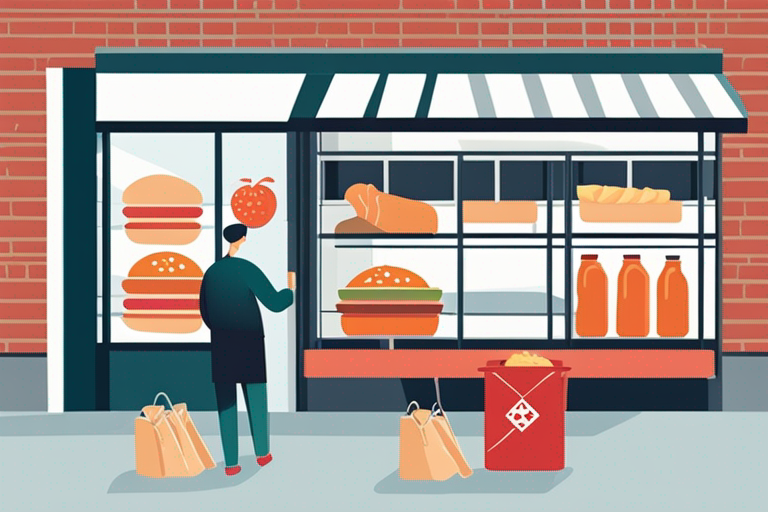
Ensuring Food Safety at St. John's Food Share
Get Your Free Food Safety Cheat Sheet
30 most common foods with instant answers. Print it and stick it on your fridge—completely free!
Ensuring Food Safety at St. John's Food Share
In an effort to combat food insecurity and support the community, St. John's Food Share plays a crucial role in providing nutritious food to those in need. As a volunteer or beneficiary, it's essential to understand the importance of food safety to prevent foodborne illnesses and ensure the well-being of everyone involved.
Importance of Food Safety
Food safety is paramount when handling and distributing food, especially in a communal setting like St. John's Food Share. By following proper food safety practices, you can prevent the spread of harmful bacteria and viruses, safeguarding the health of individuals who rely on these services.
Common Food Safety Risks
Some common food safety risks to be aware of include:
- Cross-contamination: When harmful bacteria from one food item are transferred to another through contact.
- Improper temperature control: Food that is not stored or cooked at the correct temperature can lead to bacterial growth.
- Poor hygiene practices: Failure to wash hands, utensils, and surfaces can introduce contaminants into the food.
Tips for Food Safety at St. John's Food Share
To ensure food safety at St. John's Food Share, consider the following tips:
Storage Guidelines
Proper storage is crucial to maintaining the quality and safety of donated food items. Follow these guidelines:
- Refrigeration: Store perishable items such as dairy, meat, and eggs in the refrigerator at the appropriate temperature (below 40°F or 4°C).
- Freezing: Freeze items that won't be used immediately to extend their shelf life.
- Dry Storage: Keep dry goods like rice, pasta, and canned goods in a cool, dry place to prevent spoilage.
Handling Procedures
When handling donated food items, observe the following procedures:
- Wash your hands thoroughly before and after handling food.
- Use separate cutting boards and utensils for raw and cooked foods to prevent cross-contamination.
- Label and date all perishable items to track their freshness.
Distribution Practices
During food distribution at St. John's Food Share, prioritize safety by:
- Using gloves or utensils to serve food to minimize direct contact.
- Ensuring that hot foods are kept hot (above 140°F or 60°C) and cold foods cold (below 40°F or 4°C) during serving.
- Discarding any leftover food that has been sitting out for more than two hours to prevent bacterial growth.
Food Safety Training and Resources
St. John's Food Share can benefit from providing volunteers with food safety training to enhance their knowledge and skills. Consider incorporating the following resources:
- Online Courses: Encourage volunteers to take online food safety courses to learn about proper handling and storage practices.
- Printed Guidelines: Provide volunteers with printed materials outlining food safety protocols specific to St. John's Food Share.
- Regular Updates: Stay informed about the latest food safety regulations and guidelines to ensure compliance and best practices.
Conclusion
In conclusion, prioritizing food safety at St. John's Food Share is crucial to promoting the health and well-being of the community. By following proper storage, handling, and distribution practices, volunteers can help prevent foodborne illnesses and ensure that donated food remains safe and nutritious for consumption. Through education, training, and collaboration, St. John's Food Share can continue to make a positive impact on the lives of those in need while upholding the highest standards of food safety.

Authoritative Food Safety References
These agencies and university labs inform every tip and health precaution we publish.
USDA FoodKeeper – Cold Storage Guidelines
Official refrigerator, freezer, and pantry timelines maintained by the U.S. Department of Agriculture.
Visit USDA FoodKeeperFDA Produce Safety Rule & Grower Guidance
Field-to-fridge handling practices that prevent contamination of fruits, vegetables, and leafy greens.
Visit FDA Produce SafetyCDC Foodborne Illness Prevention Hub
Surveillance-backed guidance on pathogens, symptoms, and steps to reduce foodborne illness risk.
Visit CDC Food SafetyUC Davis Postharvest Technology Center
University research detailing optimal storage atmospheres for produce after harvest.
Visit UC Davis PostharvestPenn State Extension – Home Food Preservation & Safety
Peer-reviewed extension bulletins on safe canning, chilling, and reheating practices.
Visit Penn State ExtensionWhat measures does St. John's Food Share take to prevent foodborne illnesses?
How often does St. John's Food Share conduct food safety inspections?
Can I donate homemade food to St. John's Food Share?
How can I volunteer at St. John's Food Share and receive training in food safety?
Get Your Free Food Safety Cheat Sheet
30 most common foods with instant answers. Print it and stick it on your fridge—completely free! Want more? Upgrade to the complete guide with 70+ foods.
Scan your food directly and get instant safety info using our AI-powered camera feature.